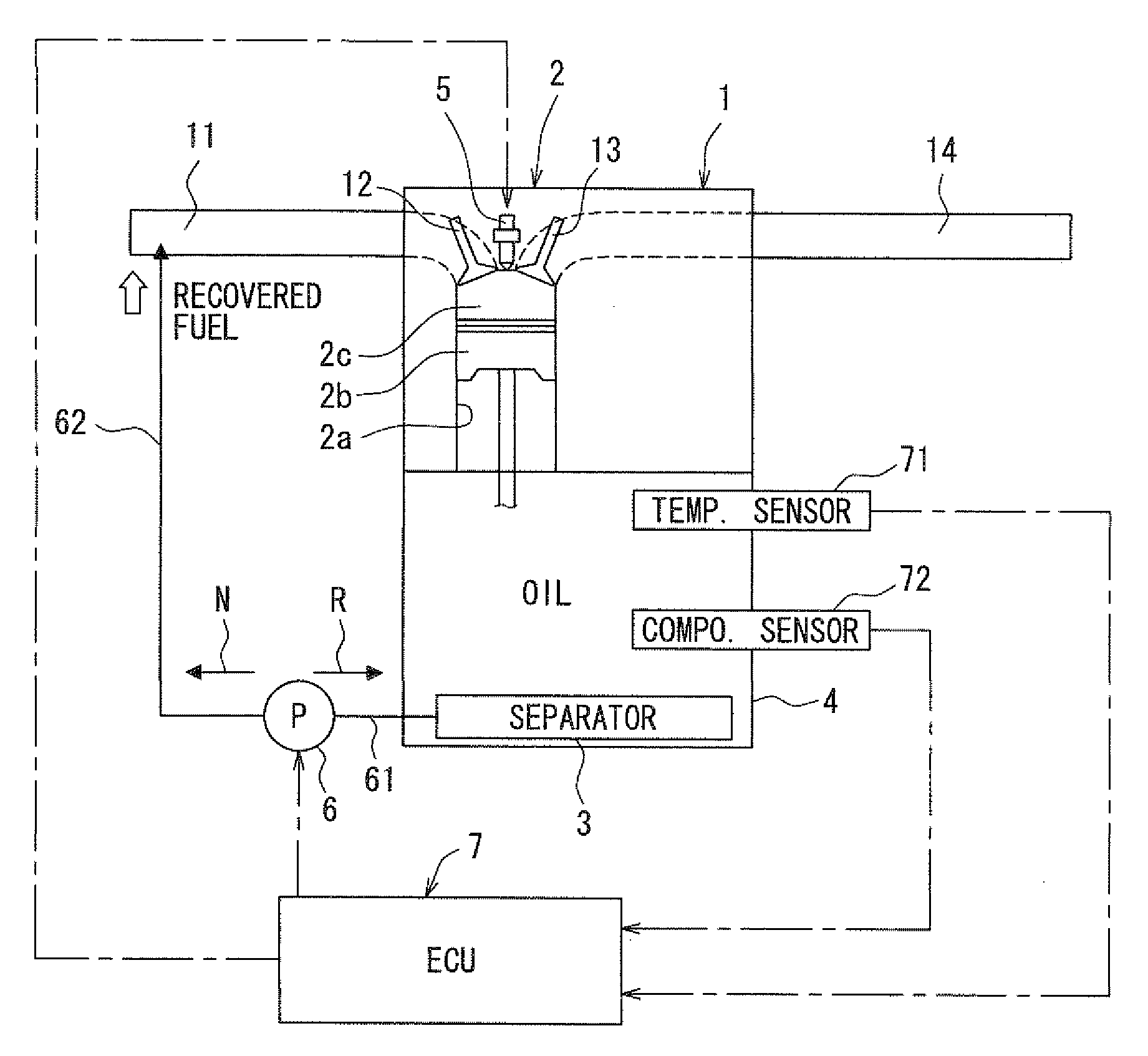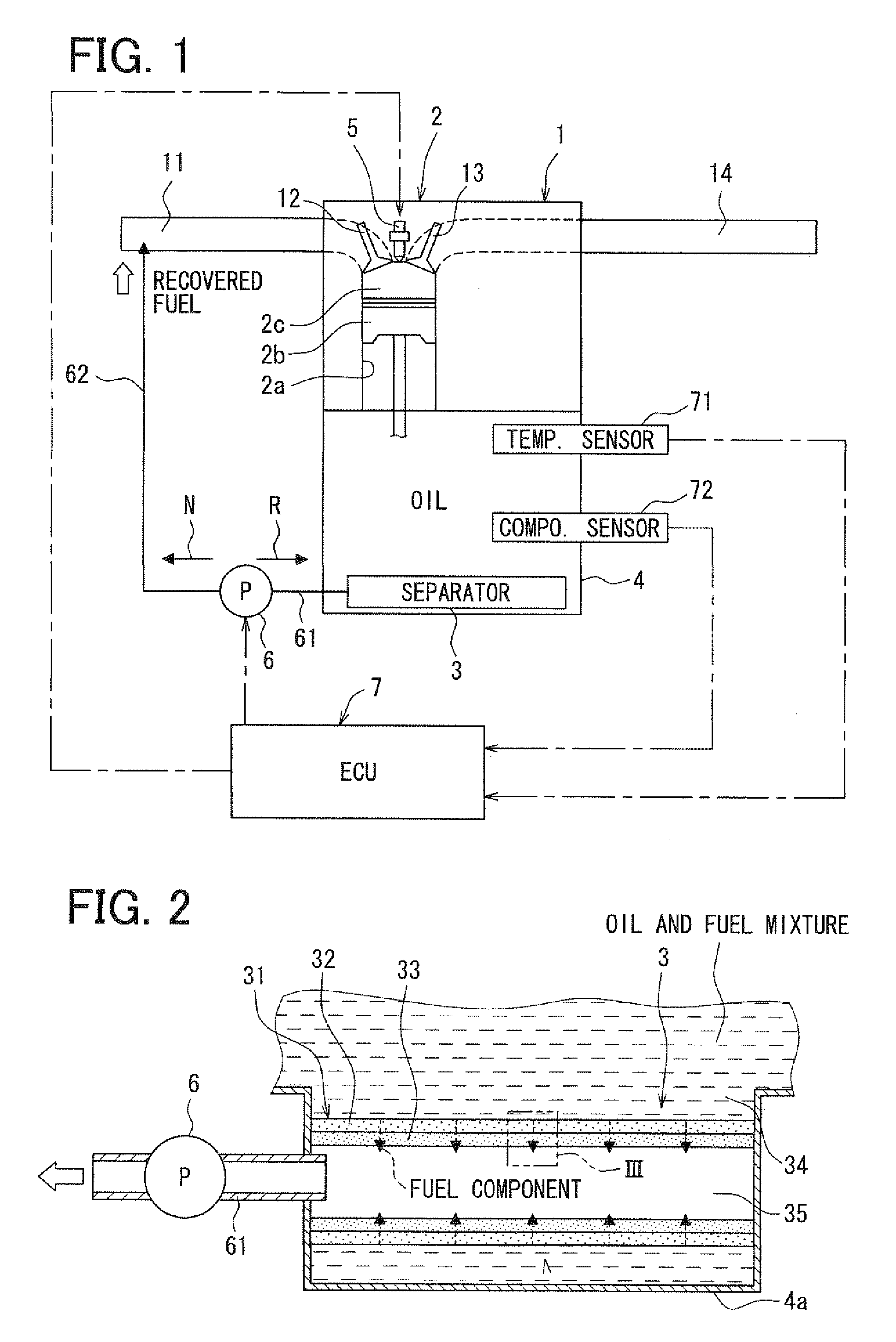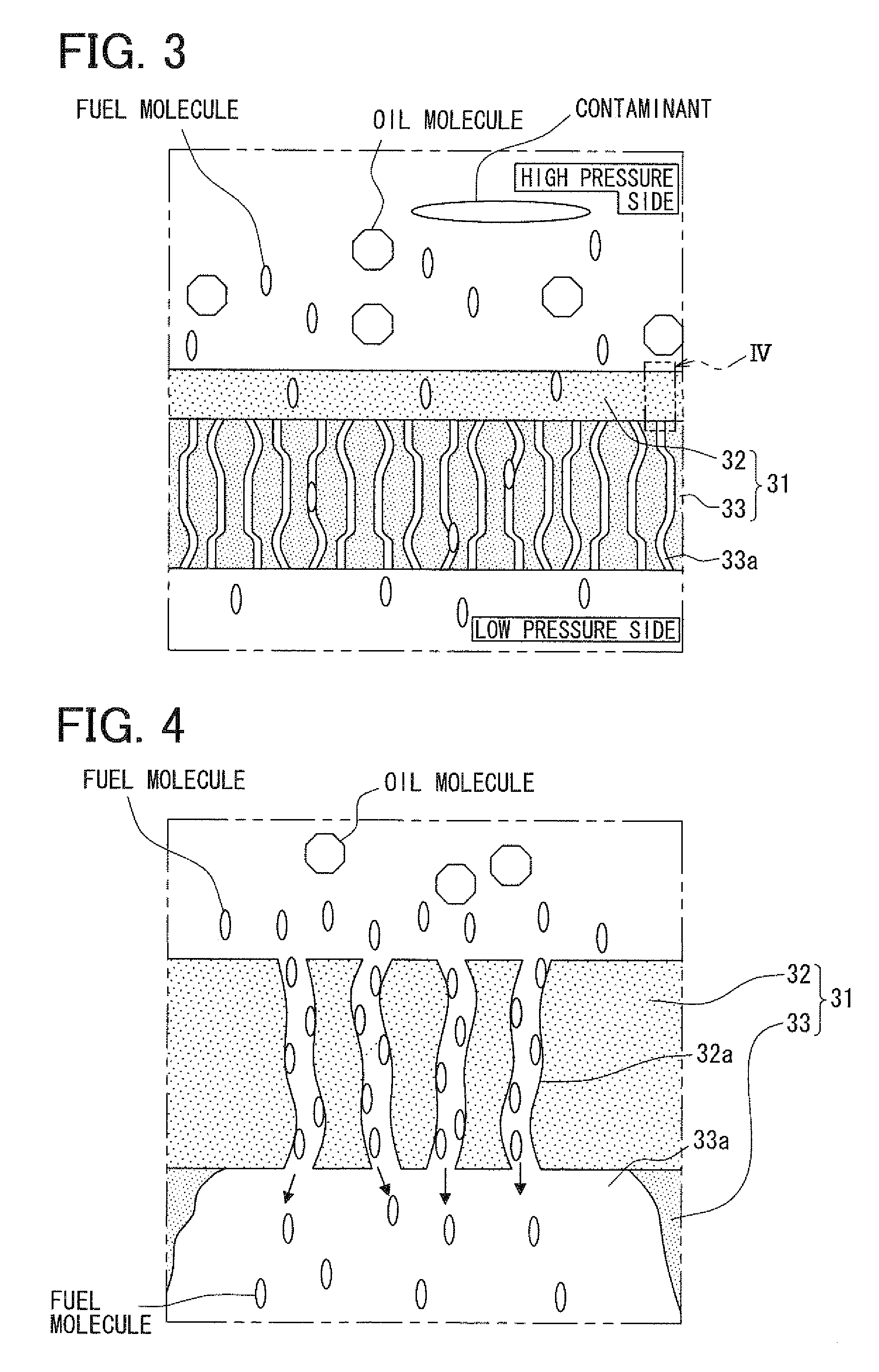Dilution limiting device
a limiting device and limiting technology, applied in the direction of auxilary lubrication, pressure lubrication, lubrication elements, etc., can solve the problems of disadvantageous degradation of lubricant oil and limit the dilution of lubricant oil by the fuel, and achieve the effect of reducing the lubricity of the lubricant fluid
- Summary
- Abstract
- Description
- Claims
- Application Information
AI Technical Summary
Benefits of technology
Problems solved by technology
Method used
Image
Examples
first embodiment
[0024]A lubricant oil filtering system according to a first embodiment of the present invention will be described with reference to FIGS. 1 to 8. FIG. 1 shows a system structure of the lubricant oil filtering system of the internal combustion engine, in which the dilution limiting device is implemented. In this instance, the engine 1 is a multi-cylinder (e.g., four cylinder) engine. In the engine 1, a fuel injection valve 5 is provided in a combustion chamber 2c of each cylinder 2. Fuel, which is stored in a fuel tank, is pumped by a fuel pump to the fuel injection valve 5 through a delivery pipe (not shown).
[0025]The fuel tank stores gasoline as the fuel. The fuel is not limited to the gasoline and may alternatively be, for example, a blended fuel (e.g., gasohol), in which the gasoline is mixed with alcohol.
[0026]An intake pipe 11 is connected to a cylinder bore 2a of each cylinder 2, in which a piston 2b is reciprocably received. At the lower side of the cylinder bore 2a, a crankc...
second embodiment
[0083]Other embodiments of the present invention will be described below. In the following embodiments, the components, which are similar to those of the first embodiment will be indicated by the same reference numerals and will not be described further for the sake of simplicity.
[0084]FIG. 9 shows a second embodiment of the present invention. In the second embodiment, a vibrator (a vibrating means) 8 is provided to vibrate the fuel component separation film 32 and serves as the regenerating means for regenerating the separating function of the fuel component separation film 32.
[0085]As shown in FIG. 9, the vibrator 8 is placed between the fuel component separator 3 and the bottom portion of the oil pan 4.
[0086]The contaminants merely adhere to the fuel component separation film 32. Thus, when the fuel component separation film 32 is vibrated by the vibrator 8 upon receiving a corresponding command from the ECU 7, the contaminants can be shaken off from the area of the fuel componen...
third embodiment
[0088]FIG. 10 shows a third embodiment of the present invention. In the third embodiment, the fuel component separator 3 is further spaced from the bottom wall 4a of the oil pan 4 in comparison to the first embodiment.
[0089]As shown in FIG. 10, the fuel component separator 3 is spaced by a predetermined height h from the bottom wall 4a at the bottom portion of the oil pan 4. In this way, the fuel component separator 3 is sufficiently spaced from the bottom wall 4a at the bottom portion of the oil pan 4 on which the contaminants (e.g., debris, slug) tend to precipitate. Therefore, it is possible to limit adhesion of the precipitated contaminants to the fuel component separator 3, more specifically, the fuel component separation film 32. Furthermore, the fuel component separator 3 is placed in the relatively large space of the oil pan 4, so that the fuel component separation film 32 of the fuel component separator 3 can be made relatively large to improve the separating function of th...
PUM
 Login to View More
Login to View More Abstract
Description
Claims
Application Information
 Login to View More
Login to View More - R&D
- Intellectual Property
- Life Sciences
- Materials
- Tech Scout
- Unparalleled Data Quality
- Higher Quality Content
- 60% Fewer Hallucinations
Browse by: Latest US Patents, China's latest patents, Technical Efficacy Thesaurus, Application Domain, Technology Topic, Popular Technical Reports.
© 2025 PatSnap. All rights reserved.Legal|Privacy policy|Modern Slavery Act Transparency Statement|Sitemap|About US| Contact US: help@patsnap.com



